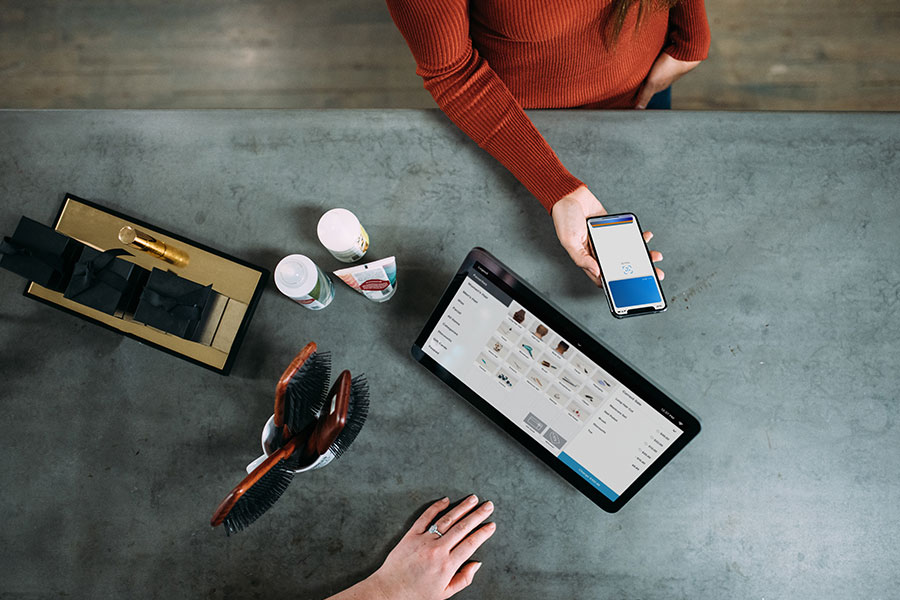These days, mobile has become an essential gadget to access web. Due to this reason, a number of e-commerce businesses have stepped into the world of M-Commerce or Mobile commerce. According to the web experts, m-commerce has tremendous potential as it has displayed a 75% growth rate and touching near about $25 billion people.

M-Commerce is a completely new platform, with latest interaction systems and usage contexts that present a host of restrictions and disadvantages to look out for when creating and running an m-commerce site. With industry practices & methodologies, m-commerce, to a broad extent, unreached area when it comes to proper execution.
This is the reason, we tried to put all our efforts to organize a large-scale usability survey targeting majorly on m-commerce. We get down to look into the overall m-commerce experience, encompassing users' conceptual understanding and how visitors communicate with form sections, category navigation, a search box, product pages and the checkout process. Here's a checklist of basic elements of M-Commerce (Mobile Commerce) Usability:
1. Create the Landing Page lightly checked
Issue: If visitors are unable to obtain a general outline of the overall site by promptly looking at the home page, they will feel unsure about the site and maybe finish up searching the information they need.
A majority of users scrolled up and down when first coming on a landing page or a category navigation, in what most represented as “acquiring a general outline of the overall site.” These users required to explore the information prior to determining that the site is useful or not. In certain examples, when a user found the category they were seeking, they continued to look through one or two other categories to get a better sense of the other options on the website.
List of things you need to avoid for M-Commerce (Mobile Commerce) Usability
2. Be Responsive To User's Afraid Of Spreading Their Data
Issue: Writing on mobile gadgets is gawky, so visitors are steadily worried about spreading their inputted data.
Data security is something which needs to be considered seriously. Your users surely feel uneasy while filling out the data. Naturally, the advice is uncomplicated: always continue the visitor's data, which needs to concentrate on advanced technology, testing soundly, and saving the entered data temporarily on the user’s mobile. There are plenty of m-commerce sites that are failing to do this, which becomes the reason users feel scared.
Preserving data is always recommended, naturally, however cautioning the visitor and providing them the choice to move backward prior to ruining their data is a correct alternative. And moreover, it provides the user a possibility to set off the devastating action. This kind of alternative solution could be particularly helpful for less ordinary navigation ways, where continual data is too time-taking to carry out, keeping in mind how a number users it affects.
3. Don't forget to use “Add to Cart” button
Issue: Online customers are likely to misread cart buttons if there is no “Add to Cart” button at the bottom of each product page.
A broad reach of the tried sites had numbers of identical firsthand call-to-action (CTA) buttons on product pages, first at either the uppermost of the product page and an another one is at the bottom of the page. To adapt this activity and minimize misunderstanding of any cart pictures, give a break to put “Add to Cart” button to the bottom most of all of your product pages.
4. Make sure not to distract user's attention with Animated Carousels
Generally, visitors pay no attention on vital attributes that look only in a carousel, and they don't have an enough time communicating with carousels themselves.
Use of animation in m-commerce can lead to interaction troubles for a majority of the test subjects. The carousels merely changed too speedily for some topics to both read and pick an option. In several examples, a user noticed a carousel slide fascinating and made an effort to tap it. But, the banner changed to the next at the very quick time, making the outer slide to load. At times, the user noted this, however at times they did not and closed the home page instantly because they did not discover it applicable to what they were seeking.
5. Try to exhibit product details or photos on different sub pages
Issue: Users have unbelievable difficulty comprehending the reach of the product pages.
While using a mobile, comprehending the reach of the ongoing page is immensely more harder for users, because of the very small screen. Product pages often fail the elusive yet essential page-scope evidences that are introduced on complete pages, like a complete set of breadcrumbs, a general review of the product page, and complete URL paths visible end-to-end the browsing meeting.
B-112, Sector-64
Noida - 201301
